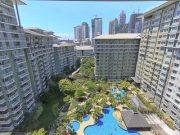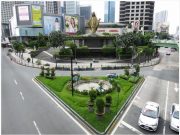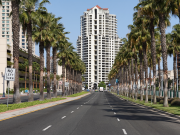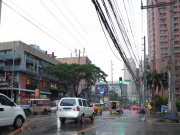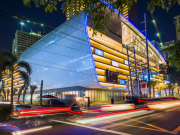You know that exact moment when your stomach drops? It usually happens right after you think you’ve won. You finally found the perfect lot. I mean, the price is right, the location is strategic, and the paper (the title), it all checks out. You’re already mentally designing that sleek, small apartment complex, or maybe that cool, boutique cafe you’ve always dreamed of opening. You see the money flowing, the future secured.
Then comes the gut-punch.
You submit your plans for a building permit, and the local engineer, the LGU guy, just gives you that tired, “Bless your heart” look and says, “Sorry, sir/ma’am. This area is zoned R-1 (Residential, low-density). You can’t put a four-story commercial cafe here.” Total value bomb. That perfect lot? Suddenly useless for your perfect plan.

Understanding Zoning Without Losing Your Mind
So, what is zoning, really? Think of it as the city’s master plan. It’s the entire LGU, your city or municipality, saying, “We’re organizing this place.” This power is handed down through the Local Government Code of 1991 (Republic Act No. 7160), which essentially empowers local authorities to manage and control land use within their jurisdiction.
This plan isn’t a suggestion; it’s the law for that area. It’s all written down in the Comprehensive Land Use Plan (CLUP). The CLUP is the official roadmap for sustainable, orderly growth, and it’s critical because it balances everything: the need for new schools and parks with the desire for business and, yes, environmental protection.
The simple takeaway is this: understanding this CLUP is key to legal compliance and smart planning. If your plan doesn’t match the map, you don’t build. Simple as that.
Purpose of a Zoning Ordinance
The main goals of a zoning ordinance are to ensure orderly and sustainable development and to protect the health, safety, and welfare of the community. Specifically, it aims to:
- Guide Growth: Regulate future growth and development in accordance with the long-term vision set by the CLUP.
- Prevent Conflict: Separate incompatible land uses (e.g., preventing a heavy industrial factory from being built in a residential neighborhood) to minimize pollution, traffic, and noise.
- Ensure Quality of Life: Protect the character and stability of functional areas (residential, commercial, etc.) and ensure adequate provision for community facilities like schools, hospitals, and parks.
- Promote Safety: Integrate disaster risk reduction and climate change adaptation, often by establishing Overlay Zones (e.g., faultline, flood, and seismic hazard zones) where development is strictly limited or subject to special controls.
- Conserve Resources: Preserve and protect environmental and agricultural lands, as well as areas of historical and cultural significance (Heritage Overlay Zones).
Key Components and Classifications
A typical Zoning Ordinance divides the LGU’s territory into various zones, each with specific regulations.
| Zone Classification | General Purpose | Key Regulations |
| Residential (R-1, R-2, R-3) | For housing and dwelling purposes. | Regulates density (low, medium, high), building height limits (BHL), and lot area requirements. |
| Commercial (C-1, C-2, C-3) | For trade, services, and business activities. | Differentiated by scale, from neighborhood convenience stores (C-1) to regional business districts (C-3). |
| Industrial (I-1, I-2, I-3) | For manufacturing and production. | Differentiated by nuisance level (light, medium, heavy) and required distance from residential zones. |
| Institutional | For government offices, schools, hospitals, and churches. | Located to be accessible to the community. |
| Agricultural | Primarily for agricultural production. | Limits non-agricultural uses to protect food security. |
| Protected/Forest | For conservation of biodiversity, watersheds, and ecological integrity. | Strict restrictions on permanent structures and land conversion. |
| Overlay Zones (OZ) | Applied on top of a base zone to impose an additional layer of regulation. | Examples: Flood OZ, Faultline OZ, Heritage OZ. These supersede the base zone’s rules where necessary for safety or preservation. |
What Zone Are You Really In?
Here’s the golden rule for property investors in the Philippines: The single biggest thing that dictates a property’s potential value and ROI (Return on Investment) is what you are legally allowed to build on it. A tiny piece of dirt zoned for a high-rise tower is infinitely more valuable than a sprawling farm lot zoned for nothing but palay.
Let’s break down the big four zones that dictate value:
1. Residential (R): The Tahanan Zone.
This is the zone for human habitation and community stability. But you must check the density subcategory.
R-1 means low-density, quiet villages. Think single-family homes, maximum two stories, and zero commercial noise.
R-3 is more forgiving. This allows for medium-rise developments, townhouses, and yes, maybe that small sari-sari store or a home office. This small letter change is the difference between a simple house and a profitable triplex.
2. Commercial (C): The Money-Making Zone.
This is where the high-rise profits live. Again, density is absolutely key.
C-1 is generally for neighborhood markets and small, local businesses—the places that serve the surrounding residential areas.
C-3 is the heavy hitter. This is the realm of malls, skyscrapers, major office towers, and high-density business districts. The zoning type itself dictates the highest market value because of its earning potential.
3. Industrial (I): The Production Zone.
This zone is designated for factories, warehouses, and logistics hubs. Land use planning here is designed to ensure industrial areas don’t interfere with residential areas (for public health and welfare). If you’re into logistics, make sure your warehouse is I-1 or I-2.
4. Agricultural:
This is the default zone for the vast majority of the Philippines. And here is your Crucial warning: Do not buy agricultural land planning to build a resort next year unless the conversion to Residential or Commercial is already done and documented. It involves the DAR (Department of Agrarian Reform), and it’s a long, expensive legal process. Don’t fall into the trap of thinking a beautiful farm can easily become a subdivision.
Environmental and Community Guardrails
Zoning regulations are often seen as bureaucratic hurdles, but they are, in fact, the essential guardrails for responsible development and the long-term quality of life in a community. They protect the natural beauty and critical services that make a place worth living in and investing in. These “Protector Zones” ensure that growth doesn’t come at the expense of our environment or our neighborhood’s character.
Protected Areas: Conserving Nature’s Assets
For anyone looking to invest in or build near natural assets, like mountains, coastlines, or key watersheds, understanding Protected Areas is non-negotiable.
- The Law as Your Shield: National laws, such as the National Integrated Protected Areas System (NIPAS) Act in the Philippines, establish zones where development is strictly restricted. This isn’t just red tape; it’s a commitment to conserve biodiversity and ecological integrity.
- Preventing Degradation and Securing Value: These zones are crucial for preserving natural resources, preventing environmental degradation, and supporting vital climate change adaptation efforts. They safeguard the forests, watersheds, and marine sanctuaries that are vital to the health of the environment and the community.
- Protecting Your Investment: Critically, these regulations effectively protect your view and your environment from becoming an overcrowded construction site. They ensure that the natural amenity you invested in near remains intact, which is a key factor in sustained property value.
Community Support: Planning for Quality of Life
Beyond nature, zoning is the primary tool for shaping livable residential areas and ensuring essential community support. When local governments (LGUs) apply zoning correctly, they are actively ensuring a high quality of life, a massive, intangible selling point for future property value.
- Essential Spaces: Zoning regulations mandate that space is preserved for key public amenities. This includes open spaces, parks, and critical facilities like hospitals, schools, and government buildings.
- Maintaining Neighborhood Character: These community zones also include recreational facilities and public parks, which provide essential spaces for relaxation, exercise, and social interaction. Proper zoning helps maintain low-density residential neighborhoods, actively preventing the overcrowding and over-development that can ruin a neighborhood’s character.
- Harmony Through Restriction: Furthermore, zoning ordinances enforce necessary setbacks and other building restrictions. This ensures that new structures cannot encroach on protected or community spaces, maintaining a critical harmony between development and nature.
These Protector Zones serve as the non-negotiable framework for sustainable urban planning, guiding development away from sensitive areas and ensuring responsible growth that benefits the environment and the community alike. Ignoring them is not just illegal; it’s a short-sighted development that destroys the very assets that make a community desirable.
The Developer’s Reality Check: Rights, Permits, and the Bottom Line
Development Rights vs. Zoning Restrictions
Let’s be clear: Your development rights are governed entirely by your zoning classification. The zoning ordinances dictate what can be built and where. They give you the right to build, but only within the boundaries set by the CLUP.
The mandatory step is simple: Before any construction, developers must secure building permits and comply strictly with the current zoning restrictions. And yes, zoning regulations are subject to change over time, so you must always comply with the latest guidelines issued by the LGU.
And here’s the beautiful part of the guardrail: Well-planned zoning doesn’t restrict value; it preserves it. It ensures that the house next door can’t suddenly become a noisy, high-rise parking garage or a welding shop, protecting the character of the entire neighborhood and boosting property value over time. That peace of mind is worth a fortune.
The Unlikely Exception: The Variance
You might hear whispers about applying for a Variance (re-zoning). This is when you officially ask the LGU to allow a use that is technically prohibited, say, a small office building in a high-density residential zone.
The reality? Don’t budget for it. This is a major, often political, process. It’s highly complex, takes significant time, and is generally only granted for massive, large-scale projects that bring undeniable economic development and substantial tax revenue to the LGU. For your average investor, treat the current zoning as the immutable truth.
The Must-Have Document
If you walk away with nothing else, walk away with this: Don’t trust the seller’s brochure, their agent’s promise, or even a resident’s memory. You need the official document.
- The Document: You need the Zoning Certification or Locational Clearance.
- Where to go: Visit the City/Municipal Planning & Development Office (CPDO/MPDO) or the Assessor’s Office of the relevant LGU.
- The Pro-Move: Ask to see the official Zoning Map (part of the CLUP). Confirm your property’s precise classification with an official document, pay the small fee, and get a copy for your files. This step is non-negotiable before you put down any serious money.
Metro Manila Zoning Ordinances
Zoning in Metro Manila? It’s a bit of a patchwork quilt. Each of the 16 cities, and yes, even the lone municipality of Pateros, has its own Comprehensive Land Use Plan (CLUP) and matching Zoning Ordinance (ZO). Sure, the Metro Manila Development Authority (MMDA) plays a role in planning for the whole metro area. Still, when it comes to enforcing zoning rules day-to-day, it’s all in the hands of the individual Local Government Units (LGUs).
These zoning ordinances usually look ahead, think 10 to 20 years, so when you hear about “recent” changes, it’s often tweaks, new master plans, or fresh CLUP adoptions.
Here’s a quick tour of what’s trending and changing in Metro Manila zoning:
1. Moving Toward Smarter, Safer, and Greener Planning
The big idea across Metro Manila? Modernize, mix things up, and keep safety front and center.
- Disaster and Climate Resilience: Thanks to laws like the Climate Change Act (RA 9729) and the Disaster Risk Reduction and Management Act (RA 10121), cities are beefing up their zoning with Overlay Zones, think no-build zones in flood-prone spots, near fault lines (West Valley Fault), or along rivers and coasts.
- Transit-Oriented Development (TOD): Around new and upcoming transit stations (LRT, MRT, subway), many areas are being rezoned to allow taller, mixed-use buildings. The goal? Create neighborhoods where you can live, work, and play without battling traffic for hours.
- Green Building and Sustainability: Newer rules often push developers to go green, open spaces, energy-efficient designs, and smart stormwater systems. It’s about building smarter, not just bigger.
- Infill and High-Density Housing: To tackle the housing crunch and keep sprawl in check, zoning is shifting to allow taller buildings in core urban spots. More homes, less city spread.
2. What Some Cities Are Up To
Tracking every city’s latest zoning moves is like chasing a moving target. But here are some highlights:
| City | Latest Plan / Key Focus |
|---|---|
| Quezon City | Their Comprehensive Zoning Ordinance got a big update back in 2016. Lately, they’re busy with spot rezoning and granting exceptions, especially for housing projects and tweaking traffic flow in barangays. |
| City of Manila | Manila’s CLUP period ended around 2020, but the city’s still buzzing with exceptions and variances, especially for high-rise mixed-use projects and socialized housing. They’re also pushing urban renewal, especially around historic spots, often using special overlay zones to keep things balanced. |
| Las Piñas City | Their CLUP runs from 2020 to 2030, focusing on disaster risk, environmental care, and better infrastructure links. |
| Makati City | Makati’s CLUP covered 2013–2023, so they’re likely busy cooking up a new plan. Expect a focus on maximizing development in business districts while addressing socialized housing and disaster resilience. |
How to Get the Latest Zoning Info
Want to know the zoning rules for a specific property or area in Metro Manila? Here’s the no-nonsense way:
- Who to Visit: Head straight to the City or Municipal Planning and Development Office (CPDO/MPDO), or find the Local Zoning Administrator.
- What You Need: Get a Locational Clearance or Zoning Clearance. This official paper says you’re good to go for new construction, big renovations, or changing how the land’s used. It’s your proof that you’re playing by the latest rules.
Final Advice
Effective land use control is all about managing development for public safety, health, and welfare. By learning these simple rules, by knowing the map, you move from being a victim of confusing bureaucracy to being a savvy investor. That’s your power move. Get the Zoning Certificate, get the Title, and build your future.
But here’s the thing I want you to remember: this isn’t just bureaucracy designed to make your life miserable. This is a guardrail. Zoning protects your investment, guards your home’s peace, and ultimately dictates whether your neighborhood smells like tuyo and sounds like a jeepney (commercial), or if it’s quiet enough for a lazy Sunday afternoon. We’re going to stop treating zoning like a boring rule book and start treating it like the secret map to making (or saving) money.
In short, the Zoning Ordinance is the law that dictates what can be built, where it can be built, and how it must be built in a specific city or municipality. Failure to comply can result in fines, penalties, or the demolition of the non-conforming structure. To navigate these complex zoning and land use rules with confidence, turn to HousingInteractive, the country’s first property portal dedicated to delivering comprehensive property solutions. Whether you’re buying, selling, or developing, HousingInteractive helps you make informed decisions and ensures your investment aligns with local zoning regulations.



